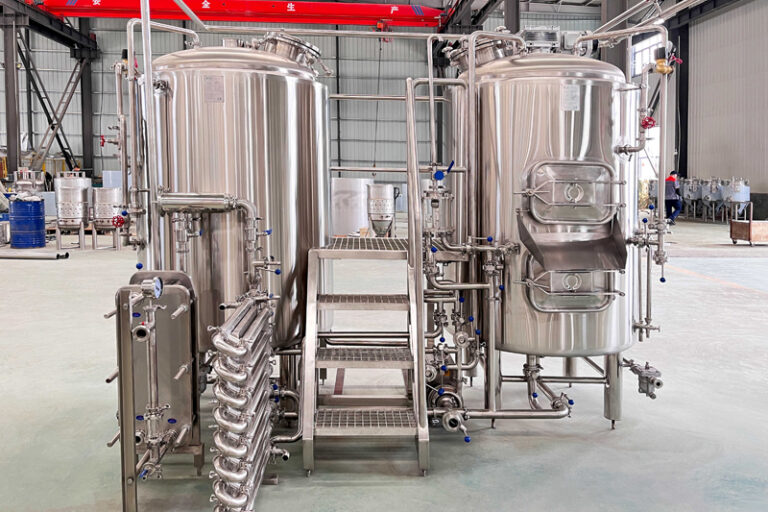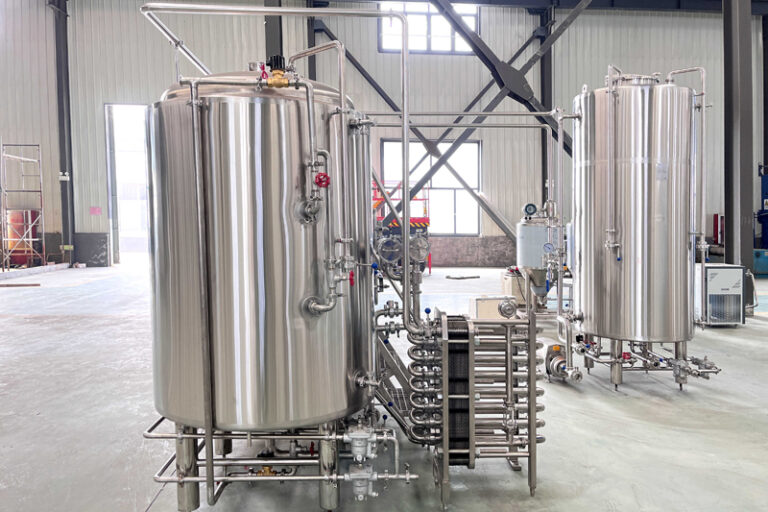Table of Contents

What is Compact Brewing Equipment?
Benefits of Compact Brewing Equipment
- Space efficiency: Compact equipment is designed to maximize the use of limited space. Through integrated and modular design, the equipment footprint is effectively reduced, so that the entire brewing process can be completed in a relatively small venue.
- Easy to operate: This type of equipment usually uses modern control systems and automation technology to simplify the operation process. Operators can control and monitor the entire brewing process through the interface, which improves production efficiency and reduces the possibility of human error.
- Flexibility: Compact equipment is often designed with a modular structure and can be flexibly configured and expanded according to needs. This flexibility allows breweries to adjust and optimize the layout and functions of equipment according to market demand or changes in product types.
- Energy saving and environmental protection: Modern compact equipment focuses on energy saving and environmental protection. Through optimized design and efficient energy utilization, energy consumption and waste emissions are reduced, which is in line with the concept of sustainable brewing.
- Consistent product quality: Compact equipment can provide stable temperature control, time management, and material flow during the production process, which helps to ensure the consistency and quality of beer. This is essential for building brand reputation and meeting consumer expectations.
Basic Brewing Equipment You Need to Start a Microbrewery
- Brewing System: The heart of any brewery, including wort barrels, lauter tuns, brew kettles, and whirlpools.
- Fermentation tanks: The container where wort is fermented and turned into beer.
- Clear tanks: Used to condition and carbonate beer.
- Cooling system: Essential for maintaining the proper fermentation temperature.
- Cleaning system: Ensure that all equipment is sanitized to avoid contamination.
- Storage tanks: Store and mature fermented beer for some time to make it more flavorful.
- Filling equipment: Fill the finished beer into bottles, cans, or kegs in preparation for packaging and sale.
Types of Brewing Equipment:
EQUIPMENT TYPE | DESCRIPTION | EXAMPLES |
Brewing System | Equipment used for mashing, lautering, boiling, and whirlpooling. | Mash tun, lauter tun, brew kettle, whirlpool tank |
Fermentation Tanks | Vessels for fermenting wort into beer. | Conical fermenters, unitanks |
Brite Tanks | Tanks for beer conditioning and carbonation. | Horizontal brite tanks, vertical brite tanks |
Cooling System | Systems to control fermentation temperature. | Glycol chillers, heat exchangers |
Cleaning System | Equipment to clean and sanitize brewing equipment. | CIP (Clean-in-Place) systems, sanitizing agents |
Packaging Equipment | Machinery for packaging beer into bottles, cans, or kegs. | Bottle fillers, canning lines, keg washers |
Utilities | Essential support equipment for brewery operations. | Boilers, air compressors, pumps |

How to choose the most suitable compact brewing system?
There are several factors to consider when choosing the perfect microbrewing system. These factors will help you choose a system that meets your specific needs, ensuring a seamless brewing experience and producing high-quality beer.
- Batch size: Determine the batch size required for your brewing operation. Nano breweries typically produce beer in batches of 3 barrels (3 bbl) or less, so consider how much you want to brew at a time. This will affect the size of the system and the amount of space it takes up.
- Level of automation: Consider the level of automation that is appropriate for your brewing style. Some microbrewing systems offer advanced automation features, such as programmable mashing schedules and precise temperature control. Evaluate how much control you want over the brewing process and choose a system accordingly.
- Cost: The startup cost of a microbrewing system can vary depending on factors such as location, equipment size, and furnishings. It costs approximately $33,230 to $60,032 to start a nano brewery. Determine your budget and explore options that provide the best value for your investment.
- Manufacturer reputation: Research the manufacturer’s reputation before making a decision. Look for reputable brands with a track record of producing reliable and high-quality brewing equipment. Choosing a reputable manufacturer ensures you get a long-lasting system with excellent customer support.
When choosing a micro-brewing system, keep these factors in mind to find the right system for your needs. Consider the batch size, level of automation, cost, and manufacturer reputation to make an informed decision. To simplify your search, Micet Craft offers a range of nano brewing equipment in capacities ranging from 100L -to 1,000L. Explore their options to find the perfect system for your brewing aspirations.

